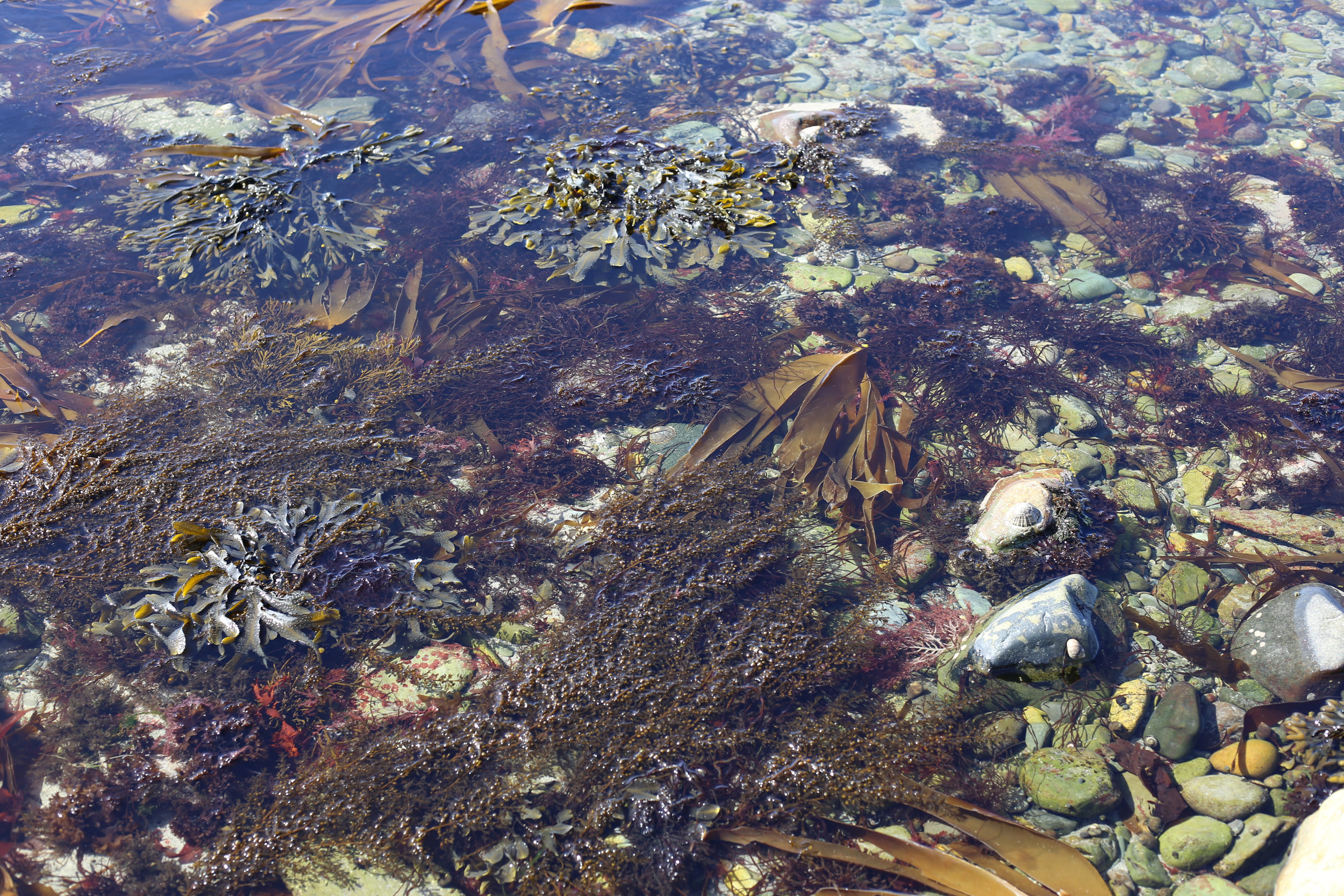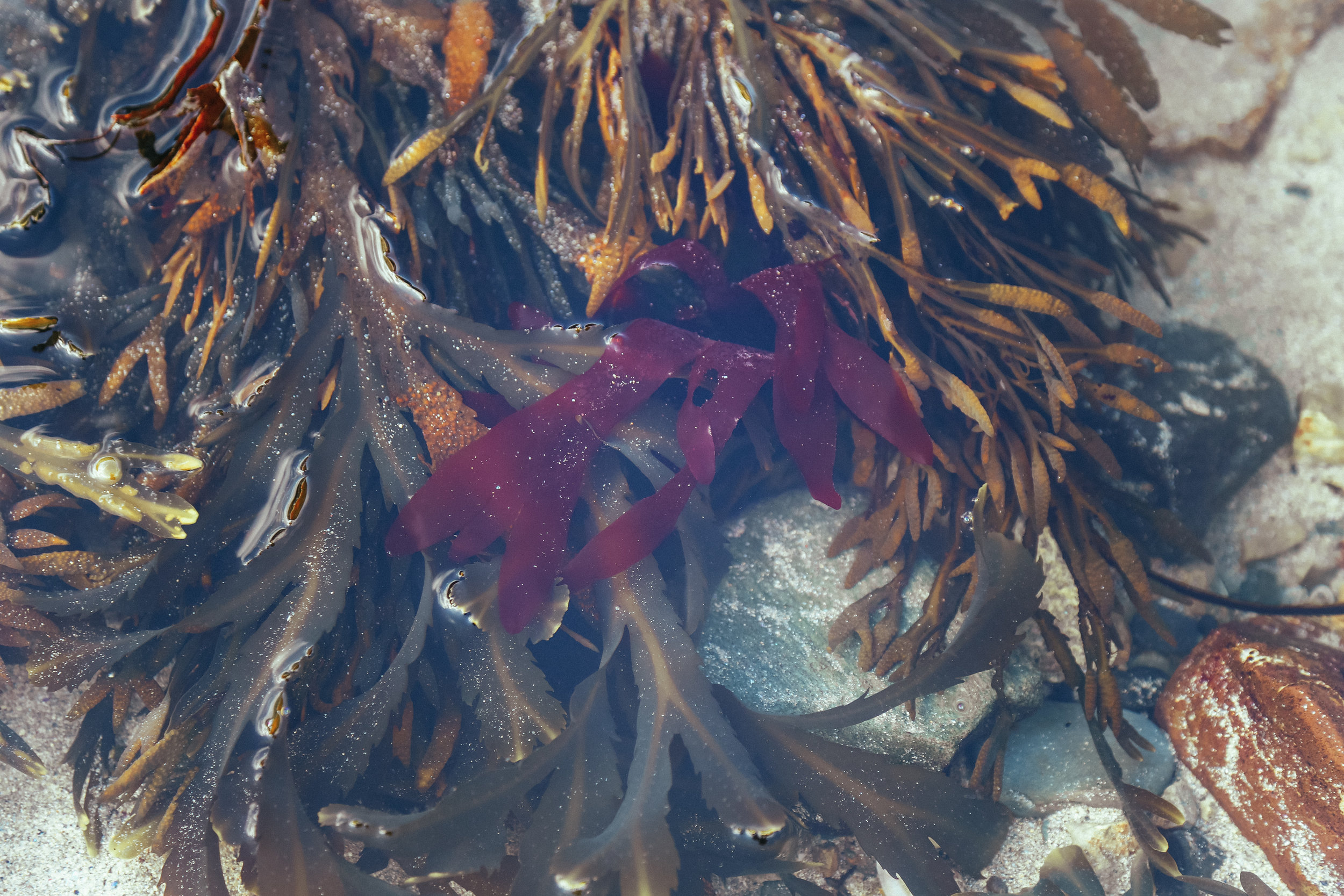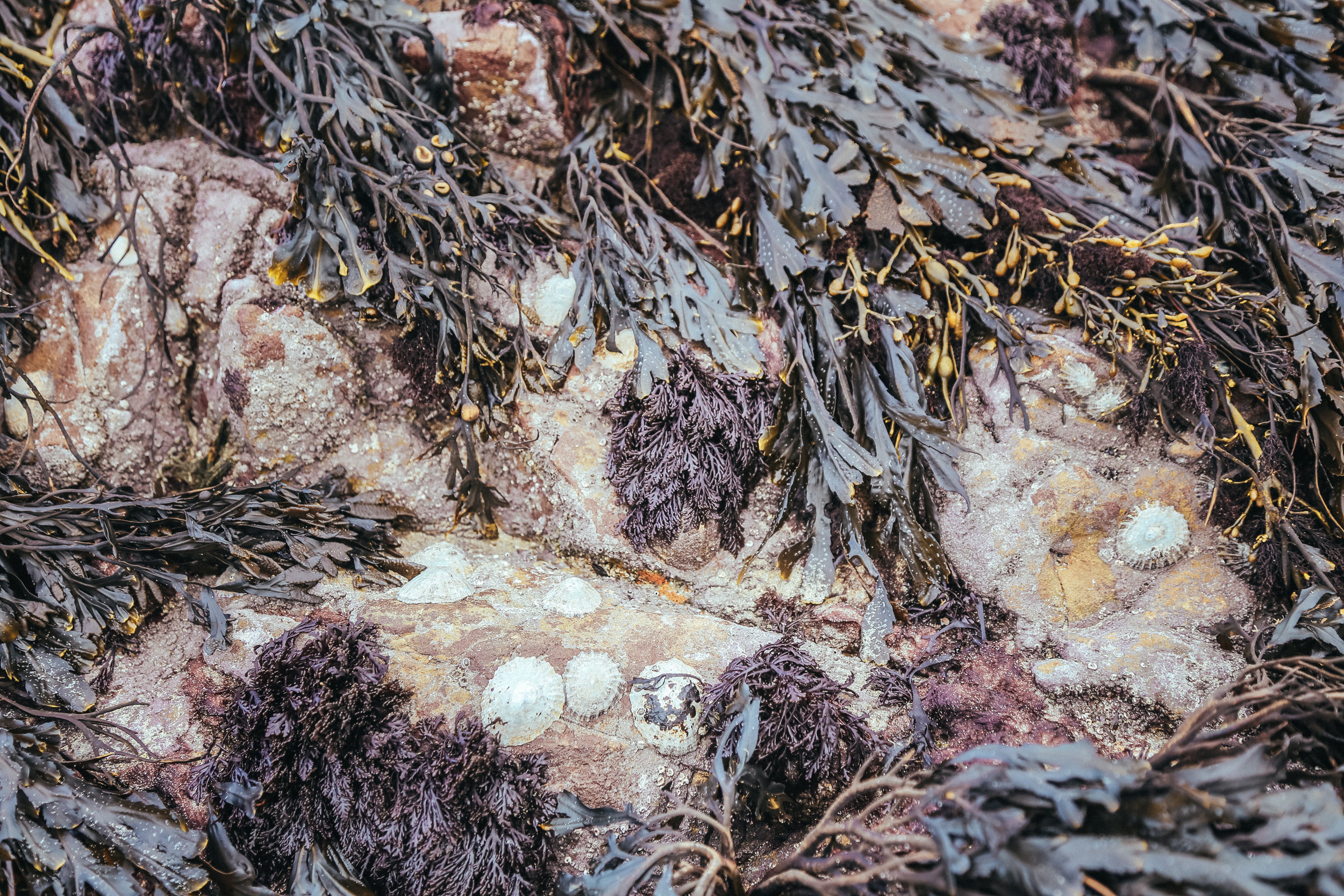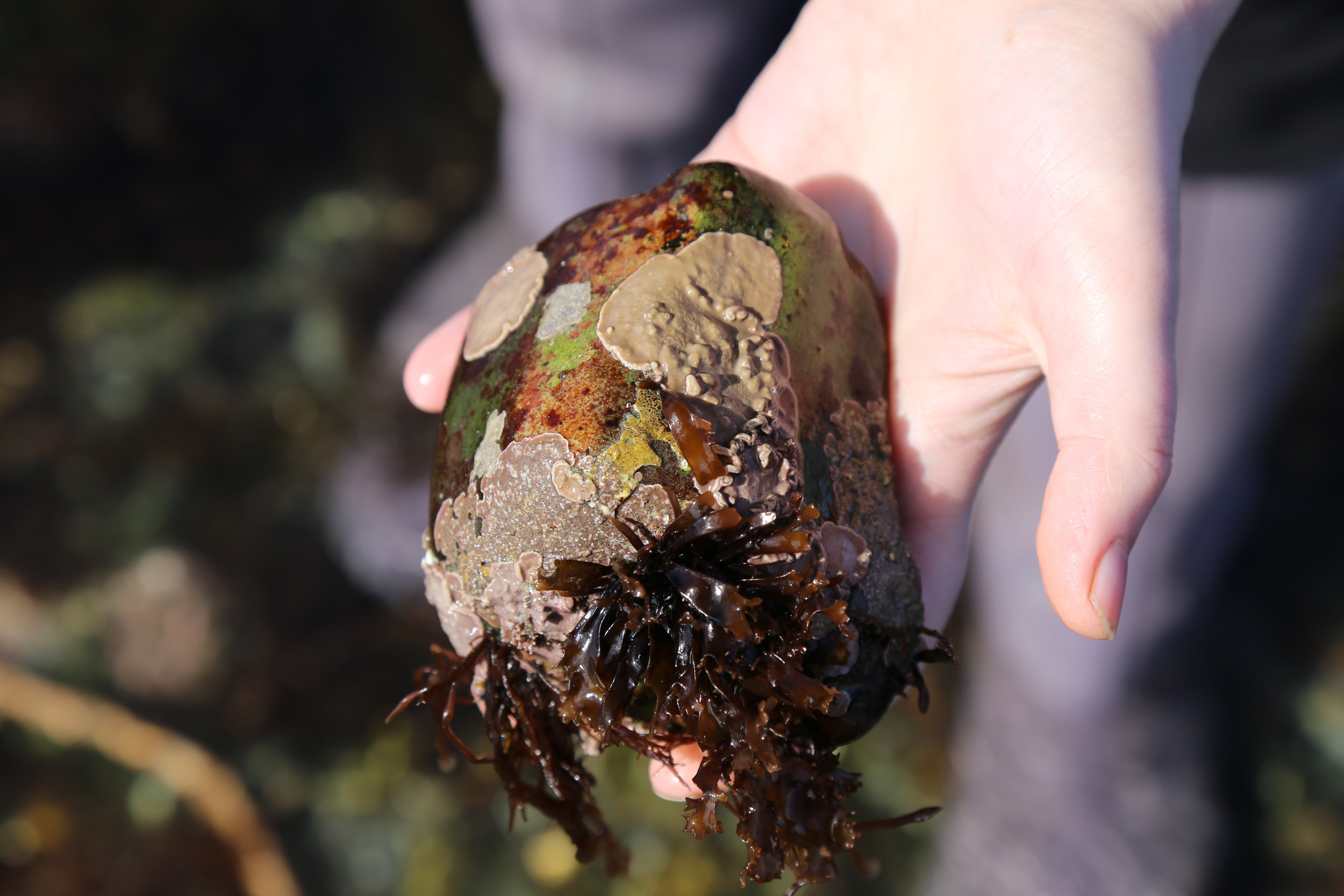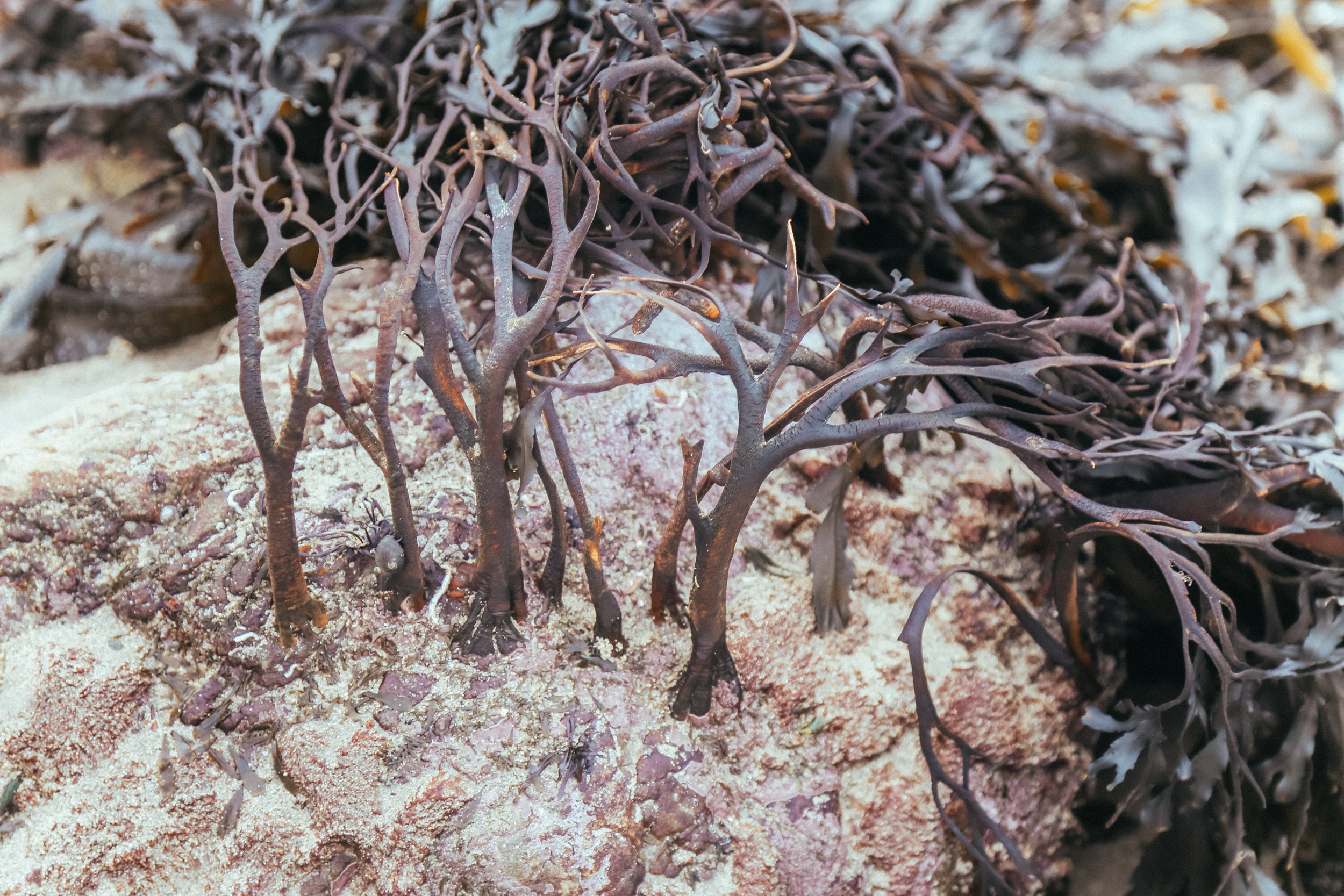GUIDE TO: Seaweed Foraging (updated)
Forget about learning everything. This is not an exam. Learn to positively identify a few seaweeds to start and over time add to your bank of knowledge… Here are eight of our favourite seaweeds for those just beginning their seaweed foraging journey.
Ireland’s exposed, jagged, Atlantic coast creates a habitat teeming with life. Just below the rockpools and tidal banks that pockmark our shores, lie colourful mops of seaweed. Pull-on your wellies and wade through the shining caramels of oarweed, the golden yellow of channelled wrack, deep olives and ochres of sugar kelp and sea spaghetti, the acid greens of sea lettuce, the purples of pepper dulse and nori and the rich burgundy of dillisk.
But here’s the thing - learning to identify and forage for seaweed is fun, but it can be daunting to begin. When I first started seaweed foraging, I’ll admit, I found it a little overwhelming. I would wade through shallow waters with my little seaweed book, enthralled, trying to identify every plant I saw. I would take a photo of a dozen plants to look up online later. But … my enthusiasm would soon hit a wall. There just seemed to be so many seaweeds - how to tell them apart, how would I ever know them all?
And so, here is the secret I eventually learned about wild plants and seaweeds. Forget about learning to identify everything. This is not an exam. Instead, try to positively identify one or two distinctive seaweeds to start with. In time, these seaweeds will become so well known to you it will feel like spotting a friendly and familiar face in a crowded room. Over time, add to your bank of friendly seaweeds … just as you would slowly (if you are me) get to know new friends at a party.
Part of the point of gathering and eating seaweed is to engage and immerse yourself in your environment, where you live, or where you are today. Enjoy observing, looking, listening and learning. Leave your stress at home.
And so, to start you on your journey, here are eight seaweeds that are ideal for those just starting out.
1. Dillisk (above), dulse, duilisc, (Palmaria palmata) is a great seaweed to begin with when you’re just starting to learn forage. It has a distinctive maroon red colour and has been likened to a collection of gloves. Notice the distinctive end edge of the leaf in the very top of this image. If you find this shape - you have found Dillisk.
2. Pepper Dulse (above) (Osmundea pinnatifida) is a small brown seaweed always found growing on rocks. Often hidden, you may need to lift away larger seaweeds to find Pepper Dulse tucked underneath. You are looking for small (2-6cm) flattened fronds that are irregularly branched. (Take visual note of the outline shape of the flattened frond ends in the centre of the image above). The colour can vary from yellowish-green (higher up the shore, in summer) to deep chocolate brown (lower down, winter). What is most distinctive about Pepper Dulse is strong truffle-like taste - once you have been introduced to the taste of Pepper Dulse you will remember it the next time.
3. Sea Lettuce (two above) (Ulva lactuca) is a fun and easy seaweed to identify - particularly if there are children with you. They will love spotting and picking the translucent green, sheetlike, seaweed. The size of the ‘sheets’ will vary depending on the location and time of year. Note the small early shoots of green sea lettuce to the right in the rockpool image above. This image was taken in early March in the west of Ireland. The second image (sea lettuce in hand) was taken in early May at the same location - notice how much larger the sheets have grown.
4. Nori, (above) Sleabhan, Slake or Laver (Porphyra umbilicalis) - Another sheetlike seaweed that is very common along the exposed west coast of Ireland and Britain. The thin flat transparent fronds appear a reddish-purple when suspended in water but become dark black when dry. When dried on rocks it has been compared to large black plastic bags littering the beach. But what it lacks in aesthetics it makes up for with a high iron and iodine content and multitude of traditional culinary uses particularly in Welsh and Japanese cultures.
5. Oarweed or Kombu Kelp. (above) A brown seaweed and one of the numerous varieties of kelp found on the lower tidal zone. You wil have to consult the tide timetables and head out on the lowest tide of the month to access the kelp forests growing. Wear wellies or waders if you have them. Kombu consists of flat or leaf like structures that grown in large clumps or ‘underwater forests’. Soak dried kombu in water overnight to create a kombu dashi (stock).
6. Sea Spaghetti (above)
Sea Spaghetti is also known spaghetti de mer, thongweed, sea thong and button weed. It grows in the lower tidal zone. Not to be confused with much smaller bootlace seaweed (bottom of left image), sea spaghetti grows from a distinctive button-shaped hold-fast (right image above) and has thicker, stronger dividing fronds. Watch out for it at the lowest tide on a full moon in Spring or Summer. Fresh Sea Spaghetti has a subtle, nutty flavour and can be eaten raw in salads. Later in the summer, treat it much like pasta spaghetti and serve with chilli and tomato sauce.
8. Bladderwrack (above)
Found on the mid-shoreline, its common names include swine-tag, sea wrack, murach dubh, dyers fucus and clogach. Bladderwrack can be identified by a short, thick stipe and a wavy edged forrking frond wirh a prominent mid-rib and pairs of air pockets or bubbles. Rich in iodine, it has been used medicinally to boost metabolism and stimulate the thyroid. On a very exposed coastline, bladderwrack can be sparse and have much fewer or no air pockets.
8. Atlantic Wakame (above)
Atlantic Wakame is also known as dabberlocks, bladderlocks, henware, murlin, winged kelp or simply alaria. Japanese Wakame is closely related. The long, yellowish-olive fronds of wakame can only be found close to the lowest water mark on freezing cold exposed northern shores. Dried wakame is good in soups and sauces and as a wrapping for fish, Alternatively marinate and chop into salad.
Important Safety Considerations
Gather only live seaweeds that are still attached to the rocks, not those washed up by the tides. Old, decomposing seaweeds are pretty easy to sniff out.
Be aware of water quality and pollution. Don’t pick from stagnant water, rockpools that aren’t regularly refreshed, busy harbours, ports etc. Also consider general ocean water quality and the possibility of toxic algae blooms (especially in summer).
Most seaweed foraging will take you to some treacherously slippery rocks and unforgiving tides. Stay switched on, consult tide tables before hand, if in doubt tread between rather than on rocks, seek out non-slip barnacles.
The tide waits for no man, be aware of a rising tide and always keep an eye on your route back to dry land.
What time of year is best for seaweed foraging?
Just as there are seasons in the forest, our underwater landscapes also have defined seasons. Spring underwater begins earlier than it does in the forest. While the forest trees stand naked in late March and early April, seaweeds are already bringing an abundance of wild colour to our rockpools. In Ireland, Spring and early Summer is a very good time for seaweed foraging. At first the seaweeds are small but they are tender and colourful. Later, as the summer wears on, the sun will begin to naturally bleach the seaweed of its colour and plants will get tougher.
Practice Mindful and Sustainable Seaweed Foraging:
Never pull seaweeds from the rocks. This is equivalent to uprooting plants. Using a sharp knife or scissors, cut only the top third of any individual growth. This will allow it to regrow. Spread your picking around. Pick a little here and there, rather than stripping a whole section away.
You Might Also Like

